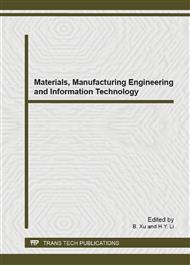p.157
p.161
p.165
p.170
p.174
p.178
p.182
p.186
p.190
Processing Technique and Impact Resistance of Kevlar/FPET/LPET Protective Nonwoven Fabrics
Abstract:
Nonwoven fabric technique has been extensively used because nonwoven fabrics can uses both filaments and staple fibers and have ease of processing, a wide range of raw material sources, and a short production. This study makes protective nonwoven fabrics with Kevlar fibers, flame retardant polyester (FPET) fibers, and low-melting-point polyester (LPET) fibers. The number of lamination layers of the nonwoven fabric is varied and examined to determine their influence on the mechanical properties of the protective nonwoven fabrics. The results of test show that tensile strength and bursting strength of the protective nonwoven fabrics increase as a result of the increased number of lamination layer.
Info:
Periodical:
Pages:
174-177
Citation:
Online since:
March 2014
Authors:
Keywords:
Price:
Сopyright:
© 2014 Trans Tech Publications Ltd. All Rights Reserved
Share:
Citation:


